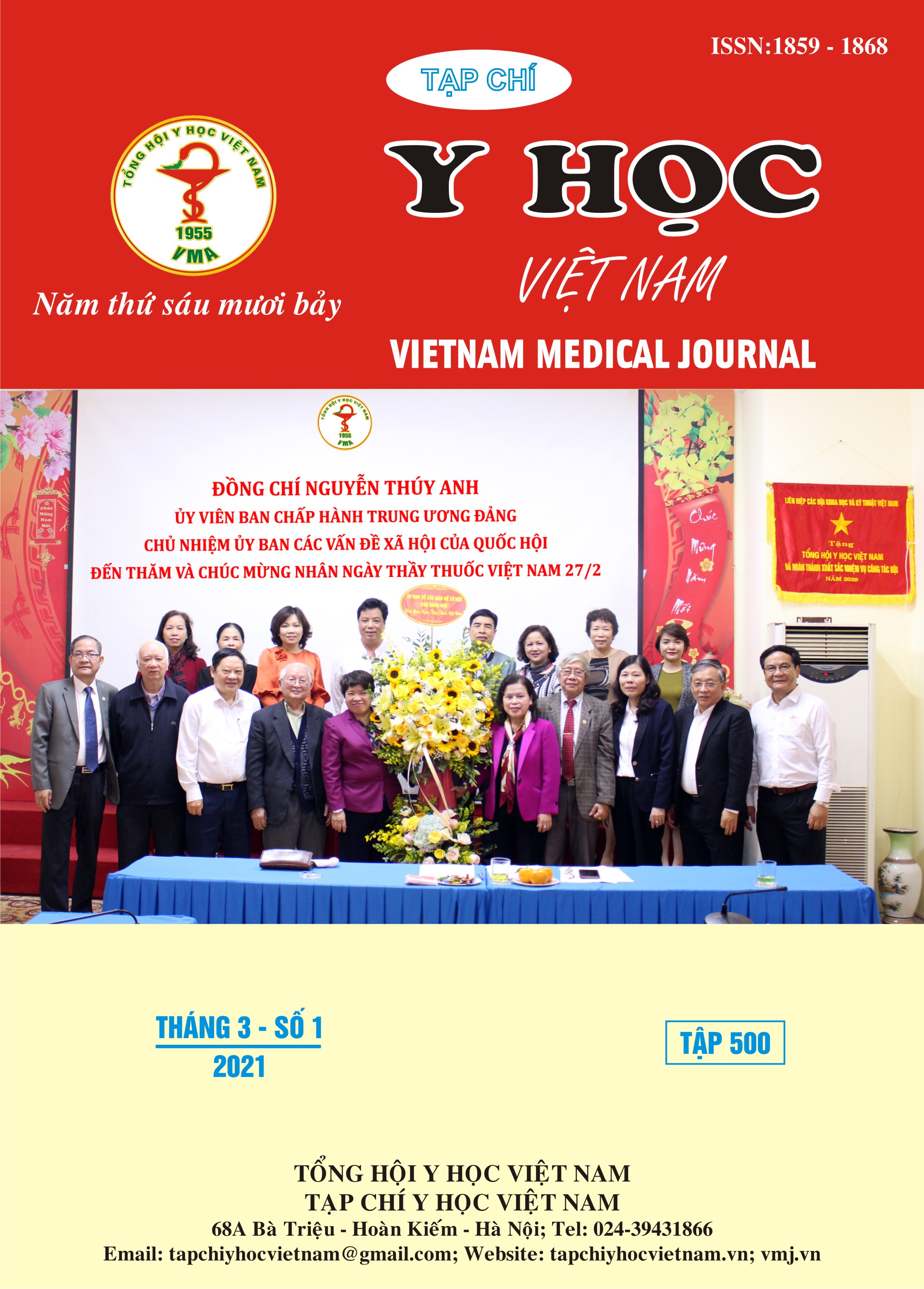KIỂU GEN VÀ KIỂU HÌNH CỦA TĂNG TRIGLYCERIDE MÁU TIÊN PHÁT Ở TRẺ EM
Nội dung chính của bài viết
Tóm tắt
Tăng triglyceride máu tiên phát là bệnh lý di truyền hiếm gặp, chủ yếu do bất thường liên quan đến quá trình chuyển hoá chylomicron dẫn đến tăng triglyceride. Các gen đã được xác định khi có đột biến gây tăng triglyceride là LPL, APOC2, APOA5, LMF1, GPIHBP1 và APOE. Mục tiêu: mô tả đặc điểm lâm sàng, hóa sinh, biến chứng và kiểu gen của các bệnh nhi tăng triglyceride máu tiên phát. Đối tượng: 6 bệnh nhi tăng triglyceride có đột biến các gen liên quan. Phương pháp nghiên cứu: nghiên cứu một loạt ca bệnh. Kết quả: tuổi chẩn đoán sớm nhất là 1,4 tháng và muộn nhất là 12 tuổi; có 5 bệnh nhân nữ và 1 bệnh nhân nam; 1 bệnh nhân có u hạt vàng, 3 bệnh nhân có biến chứng viêm tuỵ cấp, 3 bệnh nhân có lách to, 1 bệnh nhân có gan to, 2 bệnh nhân có đau bụng tái diễn. Nồng độ triglyceride huyết thanh trung bình khi được chẩn đoán là 16,86±3,77 mmol/l, nồng độ cholesterol toàn phần trung bình trong huyết thanh là 3,77 ± 0,74 mmol/l; 4 bệnh nhân có đột biến trên gen GPIHBP1; 1 bệnh nhân có đột biến trên gen LPL và 1 bệnh nhân có đột biến trên gen APOE. Cả 6 bệnh nhân đều đáp ứng với chế độ ăn giảm mỡ máu. Kết luận: tăng triglyceride máu tiên phát có biến chứng nguy hiểm viêm tụy cấp, bệnh cần được chẩn đoán sớm để điều trị dự phòng. Phân tích đột biến gen giúp chẩn đoán sớm và tư vấn di truyền phòng bệnh.
Chi tiết bài viết
Từ khóa
tăng triglyceride máu tiên phát, các gen GPIHBP1, LPL và APOE
Tài liệu tham khảo
2. Davies B.S., Beigneux A.P., Barnes R.H et al. (2010). GPIHBP1 is responsible for the entry of lipoprotein lipase into capillaries. Cell Metab, 12, 42–52.
3. Peterfy M. (2012). Lipase maturation factor 1: a lipase chaperone involved in lipid metabolism. Biochim Biophys Acta, 1821, 790–4.
4. Vrablik M., Hubacek J.A. (2010). Genetic determination of triglyceridemia with special focus on apolipoprotein gene variants. Clinical Lipidology, 5(4), 543-54.
5. Shah A.S., Wilson D.P. (2015). Primary hypertriglyceridemia in children and aldolescents. J Clin lipidol, 9(5), S20-8.
6. Musambil M., Al-Rubeaan K., Al-Qasim S et al. (2020). Primary hypertriglyceridemia: A look back on the clinical classification and genetics of the disease. Curr Diabetes Rev, 16(6), 521-531.


